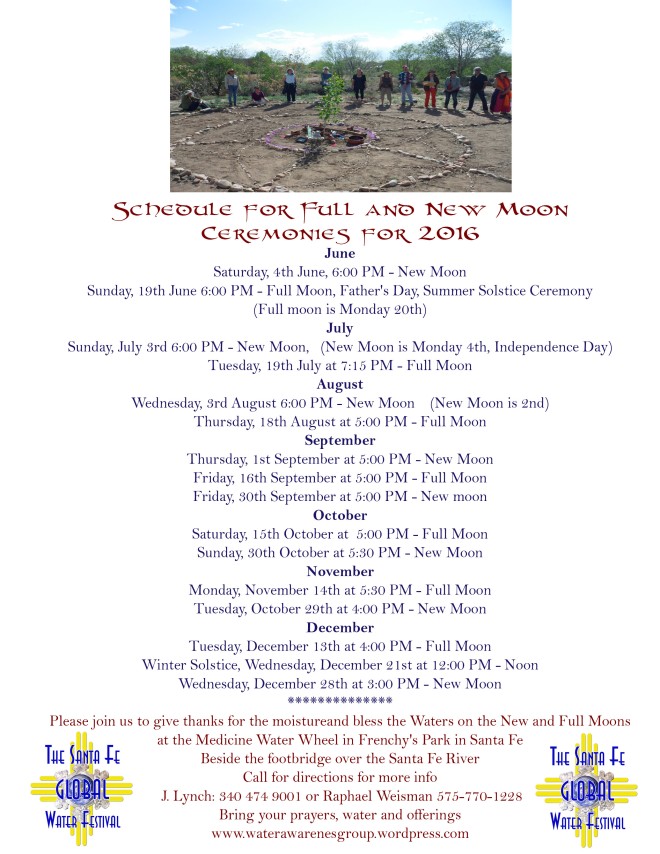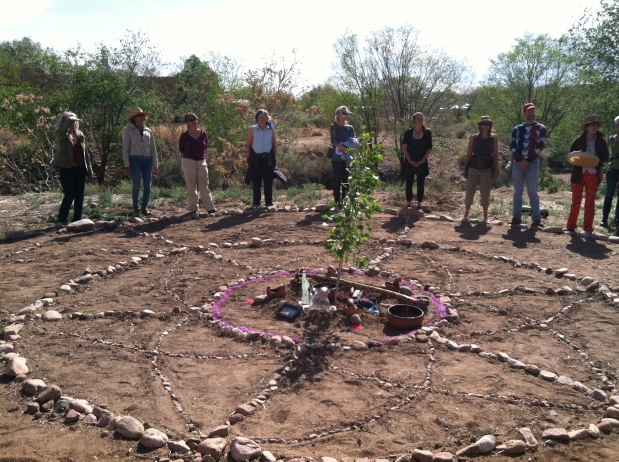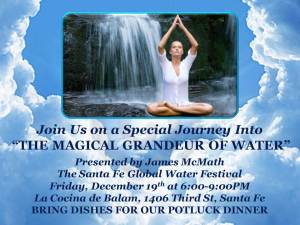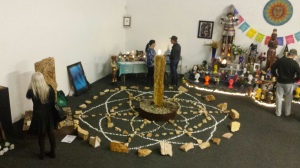
Sarah Jane White, with her grandson, worries that someday, children won’t be able to find clean water on the Navajo reservation.
Credit Laura Paskus
Sarah Jane White’s walking to the top of a sandy hill near the eastern edge of the Navajo reservation. Along the way, she points to footprints in the sand. Her 4-year-old grandson, Albino, crouches to look. She shows him the prints of a horse, then a cow. Each time, he’s delighted.
It’s sunny and warm, though just a few days before the official start of winter. We walk past juniper trees, an old sweat lodge. Albino powers across the sandstone arroyo and on up the hill. The sky’s a deep blue. And depending on the breeze, the air smells like either sage or pine.
“Right now, there’s healthy people living here,” says White. “The air is fresh. It’s clean.”
White and her relatives are “allottees,” Navajo people living on lands deeded to them by the federal government.
The federal government deferred new oil leases near Chaco Canyon National Historical Park last month. But many people who live here are still worried about how development outside the park will affect their communities, their landscapes, and their children’s futures.
If you’ve driven Highway 550 between Cuba and Farmington recently, you’ve seen the oil rigs and flares on federal allotments along the road near Lybrook and Counselor.
But people like White – people who live here – seem surprised to see how fast things have changed. “When they’re done sucking everything out, everybody’s going to pack up and leave and leave their trash behind,” she says. “Nobody’s going to clean it up. That’s what bothers me.”
At the top of the hill, White looks out, across the landscape. From here, she can see four different wells in the distance. “I see the landscape looks really beautiful, but when you see all these oil tanks and fields, that’s not beautiful,” she says. “The flare, that doesn’t look good at all. And if we don’t stop this, it’s going to be all over the place.”
In the past two years, the U.S. Bureau of Land Management has approved more than 100 new exploratory wells around here. Companies like Encana Corporation and WPX Energy have come in, offering tens of thousands of dollars to allottees willing to have a well on their lands.
Each well pad has its own road, waste pond, and tanks. During drilling, pickup trucks and semi-trucks run up and down the roads 24 hours a day.
Lori Goodman directs the nonprofit, Diné CARE – Diné Citizens Against Ruining Our Environment. “The leases are being sold… grandma and grandpa are selling their leases, they get $60,000, $80,000. They’ve never seen money like that, and they’re not understanding the value of it, even.”
Oftentimes, she explains, people don’t understand what they’re signing, and they don’t understand what’s going to happen on their lands.
That’s also a one-time payment – even if the well runs for decades.
Many Navajo people who live here are upset that the roads leading to their homes are being ripped up by semi-trucks. They’re afraid of fracking fluids. They don’t know what’s coming out of the flares. And they worry about blowouts and accidents that happen far – very far – from emergency services.
Victoria Gutierrez is Sarah Jane White’s daughter. “Especially at night, it’s enough to make you just cry. One of the ladies (said it) looks like a war zone. It’s just completely lit up,” she says. “All you see is flames everywhere, you smell that gas, that burning, it’s just ugly.”
Guttierrez knows that the wells mean money: lots of cash for people working in the fields, and depending on land ownership and jurisdiction, hundreds of millions of dollars for the state of New Mexico, the federal government, or the Navajo Nation tribal government and millions more in profits for the oil companies.
But she’s angry that Navajo people are living with the trucks and the flares, the noise and the fear.
“I think indigenous people, Navajos, we’ve been pushed around enough. We were forced to live on land no one wanted, (and) now everyone wants it because we’re full of natural resources,” she says. “It’s not right. And so, leave it where it’s at. Leave it where it’s at. That’s what I say.”
Guttierrez’s mom, Sarah Jane White, says Navajo people live where they are born. “Like, if I was born here,” she says, pointing to the ground between her feet, “I would live here. And I would die here. And I would want to be buried here. You don’t leave your homeland.”
That’s why they are fighting, she says. Because what happens now will still matter to the children born here in a century.
***
Forwarded by Leslie Lakind from




 Nearly 500 Congress participants gathered in Minnesota this November to delve into the question: how do we shift from a culture based on dominance and exploitation of resources, to one focused on long-term collective well-being, partnership, and a relational approach to the community of life?
Nearly 500 Congress participants gathered in Minnesota this November to delve into the question: how do we shift from a culture based on dominance and exploitation of resources, to one focused on long-term collective well-being, partnership, and a relational approach to the community of life? We explored the tenets of the
We explored the tenets of the 
 Throughout the Congress, we wove music and the arts into the proceedings. With song, we invoked the
Throughout the Congress, we wove music and the arts into the proceedings. With song, we invoked the 

